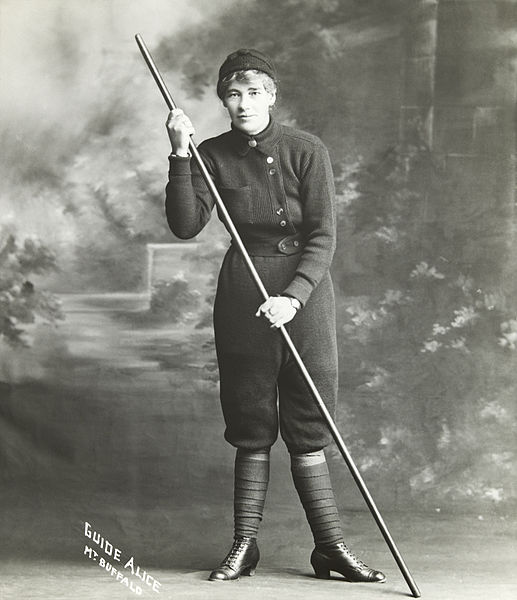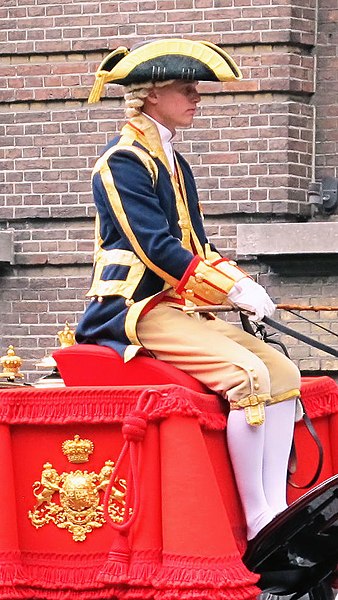Knickerbockers (clothing)
Knickerbockers,or knickers in the United States (US), are a form of baggy-kneed breeches, particularly popular in the early 20th-century United States. Golfers' plus twos and plus fours are similar. Until after World War I, in many English-speaking countries, boys customarily wore short pants in summer and "knee pants" similar to knickers in winter. At the onset of puberty or sometime in their teens, they graduated to long trousers. In that era, the transition to "long pants" was a major rite of passage. Men continued to wear knickerbockers for athletics, outdoor work, and other informal activities for which they were practical. During the early 20th century, knickerbockers were also increasingly worn by women.
Example of American knickers
The Akron Pros won the first American professional football championship in 1920
Women wearing knickerbockers, Minnesota, 1924
Alice Manfield wearing a style of knickbockers in the early 20th century for her work as a mountain guide in Australia
Breeches are an article of clothing covering the body from the waist down, with separate coverings for each leg, usually stopping just below the knee, though in some cases reaching to the ankles. Formerly a standard item of Western men's clothing, they had fallen out of use by the mid-19th century in favour of trousers.
Breeches are still worn as livery for special occasions in several European courts. Here, a coachman in the Netherlands wears them during Prinsjesdag, 2013.
Breeches as worn in the United States in the late 18th century: Elijah Boardman by Ralph Earl, 1789.
A pair of buckles for dress breeches. The T-hook of the buckle is inserted into a buttonhole located on the strap at the bottoms of the leg of the breeches. The end of the strap is slipped through, the prongs lowered and then the end slipped through the other side of the buckle.
Equestrian portrait of Prince Henry, Duke of Cumberland and Strathearn by David Morier around 1765.








